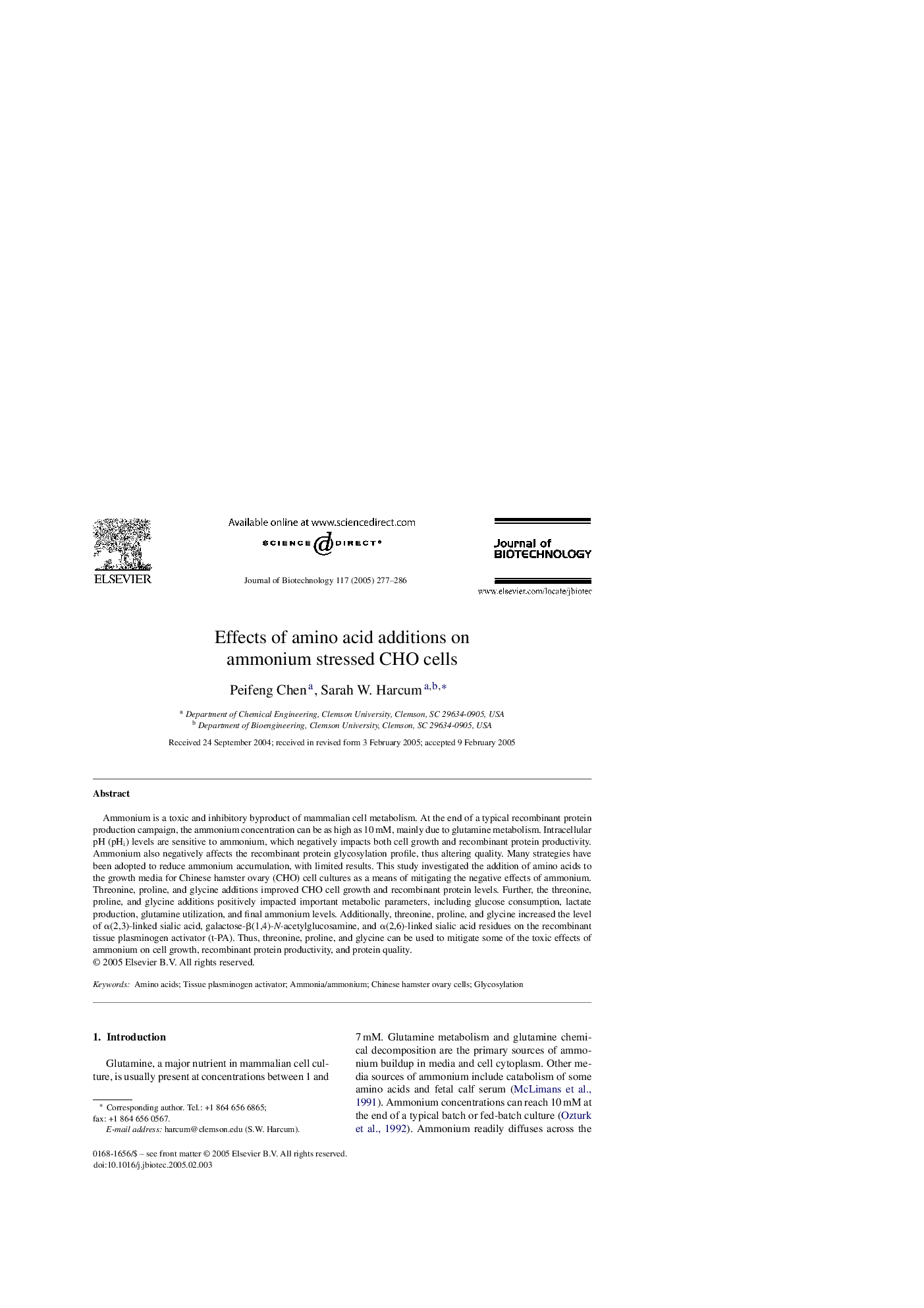| Article ID | Journal | Published Year | Pages | File Type |
|---|---|---|---|---|
| 9604385 | Journal of Biotechnology | 2005 | 10 Pages |
Abstract
Ammonium is a toxic and inhibitory byproduct of mammalian cell metabolism. At the end of a typical recombinant protein production campaign, the ammonium concentration can be as high as 10 mM, mainly due to glutamine metabolism. Intracellular pH (pHi) levels are sensitive to ammonium, which negatively impacts both cell growth and recombinant protein productivity. Ammonium also negatively affects the recombinant protein glycosylation profile, thus altering quality. Many strategies have been adopted to reduce ammonium accumulation, with limited results. This study investigated the addition of amino acids to the growth media for Chinese hamster ovary (CHO) cell cultures as a means of mitigating the negative effects of ammonium. Threonine, proline, and glycine additions improved CHO cell growth and recombinant protein levels. Further, the threonine, proline, and glycine additions positively impacted important metabolic parameters, including glucose consumption, lactate production, glutamine utilization, and final ammonium levels. Additionally, threonine, proline, and glycine increased the level of α(2,3)-linked sialic acid, galactose-β(1,4)-N-acetylglucosamine, and α(2,6)-linked sialic acid residues on the recombinant tissue plasminogen activator (t-PA). Thus, threonine, proline, and glycine can be used to mitigate some of the toxic effects of ammonium on cell growth, recombinant protein productivity, and protein quality.
Related Topics
Physical Sciences and Engineering
Chemical Engineering
Bioengineering
Authors
Peifeng Chen, Sarah W. Harcum,
